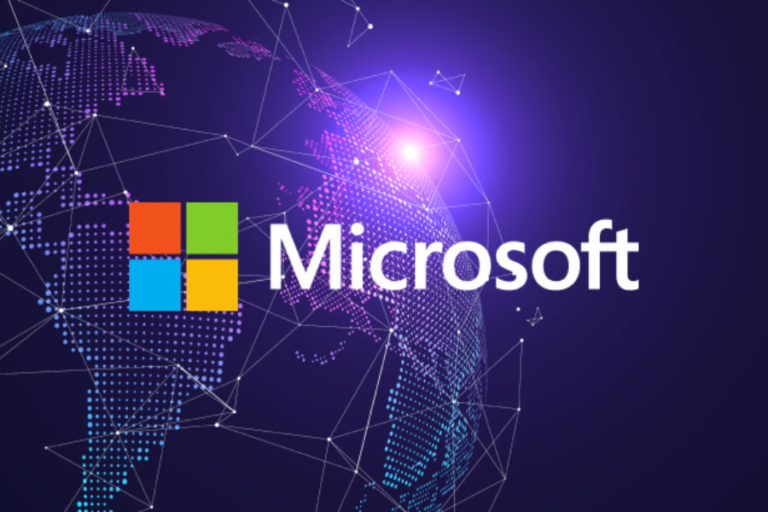The Ultimate Guide to Artificial Intelligence Acronyms by Alaikas
Artificial Intelligence Acronyms by Alaikas often abbreviated as AI, is a topic that’s making waves across various platforms, from news outlets and magazines to blogs and educational institutions. Essentially, AI involves creating machines that can mimic human intelligence—thinking, understanding, and performing tasks like a human would.
One aspect of AI that can be quite confusing is the use of acronyms. These abbreviations, formed from the first letters of each word in a phrase, can often leave people puzzled. This article aims to clarify some of the most common AI acronyms that are essential for anyone in the tech field. We’ll break down these acronyms to help you gain a better understanding of what they actually mean.
What are the Abbreviations of Artificial Intelligence Acronyms By Alaikas?
Alaikas has crafted a range of inventive acronyms that simplify complex AI concepts. These abbreviations, which condense longer terms into shorter forms, are crucial for anyone new to AI, as they play a significant role in development, research, and essential toolkits.
In this article, we’ll explain these acronyms and delve into their meanings, exploring their relevance and applications, including their connection to the concept of “Fake Human Intelligence Beach.”
Top 10 Artificial Intelligence Acronyms By Alaikas
AI – Artificial Intelligence
When a machine can mimic human intelligence, we say it has artificial intelligence. Although the concept might sound simple, AI involves complex systems and algorithms designed to analyze data, recognize patterns, and make decisions, much like a human would.
ML – Machine Learning
Machine learning, a branch of artificial intelligence, enables systems to learn and improve from experience without needing explicit programming. The goal is to develop algorithms that can gather information, analyze it, and make predictions or conclusions based on that analysis.
DL – Deep Learning
Deep learning, another branch of artificial intelligence, builds on the principles of machine learning by learning from historical data. It operates using neural networks, which are modeled after the way animal brains work. These networks exchange information and adjust based on past experiences, allowing the system to improve its understanding and performance over time.
NLP – Natural Language Processing
Natural Language Processing (NLP) refers to the technology that enables machines to analyze and understand both spoken and written language. At its core, it involves processing data into its smallest, indivisible units—referred to as atomic data structures. These atomic units are the basic elements that cannot be further broken down.
NLP is what allows AI tools to communicate in human language, understand, and process text and speech. This technology powers applications like chatbots, which automate interactions by interpreting and responding to human input.
CV – Computer Vision
Computer Vision (CV) is a branch of artificial intelligence that enables computers and systems to understand and interpret visual information from the environment. By using machine learning and neural networks, CV technology allows devices to recognize and analyze images and videos. This is why your phone can now identify your face in selfies and even enhance your appearance—goodbye, unflattering hair days!
ANN – Artificial Neural Network
Artificial neural networks are computer models inspired by the structure of the human brain. They are organized in layers, where each layer processes information and passes it to the next one. These networks consist of nodes, or neurons, that are interconnected. Deep learning, a prominent subset of neural networks, plays a crucial role in many modern AI applications.
Common AI Acronyms and Their Meanings
1. AI – Artificial Intelligence
Definition: AI, or Artificial Intelligence Acronyms By Alaikas, refers to the simulation of human intelligence in machines designed to think and learn in ways similar to humans.
Significance: AI is a broad field that includes several specialized areas such as machine learning, natural language processing, and robotics. It represents the core concept from which these subfields evolve and advance.
2. ML – Machine Learning
Definition: ML, or Machine Learning, is a subset of AI focused on creating algorithms that enable computers to learn from data and make predictions or decisions based on that information.
3. NLP – Natural Language Processing
Definition: NLP, or Natural Language Processing, is a branch of AI dedicated to enabling computers to interact with humans using natural language.
Significance: NLP powers technologies like voice-activated assistants, translation services, and sentiment analysis, helping machines understand and respond to human language.
4. DL – Deep Learning
Definition: DL, or Deep Learning, is a branch of machine learning that employs neural networks with multiple layers—referred to as “deep” networks—to analyze and interpret various kinds of data.
5. ANN – Artificial Intelligence Acronyms By Alaikas
Definition: ANN, or Artificial Neural Network, is a computational model inspired by the way the human brain processes information through biological neural networks.
Significance: ANNs are a fundamental component of deep learning and serve as the basis for many AI applications, enabling machines to recognize patterns and make decisions.
6. CNN – Convolutional Neural Network
Definition: CNN, or Convolutional Neural Network, is a deep learning model specifically designed for analyzing structured grid data, such as images.
Significance: CNNs are essential for tasks in image recognition and computer vision, enabling accurate interpretation and analysis of visual information.
7. RNN – Recurrent Neural Network
Definition: RNN, or Recurrent Neural Network, is a type of neural network where connections between nodes create a directed graph that processes information in a sequential, time-dependent manner.
8. GAN – Generative Adversarial Network
Definition: GAN, or Generative Adversarial Network, is a type of machine learning framework consisting of two neural networks—a generator and a discriminator—that compete against each other.
Significance: GANs are used to create highly realistic images, videos, and even audio, making them valuable for various applications in media and entertainment.
9. ASR – Automatic Speech Recognition
Definition: ASR, or Automatic Speech Recognition, is a technology that transforms spoken language into written text.
Significance: ASR is integral to virtual assistants, transcription services, and voice-controlled applications, enabling hands-free interaction and automation.
10. TTS – Text to Speech
Definition: TTS, or Text to Speech, is a technology that transforms written text into spoken words.
Significance: TTS is commonly used in tools for the visually impaired, virtual assistants, and reading aids, helping to make text-based information more accessible through speech.
Advanced AI Acronyms
As we explore the field of AI further, we come across a range of specialized acronyms. Here are some advanced AI terms that play a crucial role in research and development:
11. LSTM – Long Short-Term Memory
Definition: LSTM, or Long Short-Term Memory, is a type of recurrent neural network designed to learn and remember long-term dependencies in data.
12. BERT – Bidirectional Encoder Representations from Transformers
Definition: BERT, or Bidirectional Encoder Representations from Transformers, is a pre-trained model designed for understanding natural language.
Significance: BERT has established new benchmarks in NLP, particularly in tasks such as question answering and language inference, by providing more accurate and nuanced language understanding.
13. GPT – Generative Pre-trained Transformer
Definition: GPT, or Generative Pre-trained Transformer, is a language model created by OpenAI that generates human-like text using unsupervised learning techniques.
Significance: GPT models are widely used in natural language processing applications such as chatbots, content creation, and translation, enhancing the ability to generate coherent and contextually relevant text.
14. RL – Reinforcement Learning
Definition: RL, or Reinforcement Learning, is a machine learning approach where an agent learns to make decisions by taking actions in an environment to maximize its overall reward.
15. SVM – Support Vector Machine
Definition: SVM, or Support Vector Machine, is a supervised learning model used for both classification and regression tasks.
16. PCA – Principal Component Analysis
Definition: PCA, or Principal Component Analysis, is a technique for reducing the number of variables in a dataset while retaining as much of the original information as possible.
Significance: PCA is important for data compression, reducing noise, and visualizing high-dimensional data, making it easier to analyze and interpret complex datasets.
17. HMM – Hidden Markov Model
Definition: HMM, or Hidden Markov Model, is a statistical model used to represent systems that move between different states in a probabilistic way.
Significance: HMMs are widely applied in areas such as speech recognition, bioinformatics, and finance for modeling and predicting sequential data.
18. IoT – Internet of Things
Definition: IoT, or Internet of Things, refers to a network of physical devices equipped with sensors, software, and other technologies that enable them to connect and share data.
Significance: IoT is used in a variety of applications, including smart homes, wearable technology, and industrial automation, enhancing connectivity and efficiency across different sectors.
19. API – Application Programming Interface
Definition: API, or Application Programming Interface, is a collection of tools and protocols that allows different software applications to communicate and interact with each other.
Significance: APIs are crucial for integrating AI services and enabling seamless communication between various software systems, enhancing their functionality and interoperability.
20. GPU – Graphics Processing Unit
Definition: GPU, or Graphics Processing Unit, is a specialized processor designed to handle and accelerate the rendering of graphics.
Significance: GPUs are essential for deep learning and AI tasks due to their ability to perform complex calculations quickly and efficiently, making them vital for processing large amounts of data.
The Impact of Understanding AI Acronyms
Grasping these acronyms goes beyond just knowing what each letter stands for. It’s about understanding the underlying concepts and technologies they represent. As AI evolves and becomes more integrated into different areas of our lives, having a solid grasp of these terms will enhance your understanding of the latest developments and applications in the field.
Summary
Artificial Intelligence Acronyms by Alaikas explores the essential acronyms in the field of AI, shedding light on their definitions and significance. The article covers various terms from basic concepts to advanced technologies, providing insights into how these acronyms fit into the broader AI landscape. By understanding these acronyms, readers can gain a better grasp of the technologies driving advancements in AI and their applications across different sectors.
Facts
- AI (Artificial Intelligence): Refers to the simulation of human intelligence in machines that are programmed to think and learn like humans.
- ML (Machine Learning): A subset of AI focused on developing algorithms that enable computers to learn from and make predictions based on data.
- NLP (Natural Language Processing): A branch of AI that deals with the interaction between computers and humans using natural language.
- DL (Deep Learning): A specialized area of machine learning that uses neural networks with many layers to analyze data.
- ANN (Artificial Neural Network): Computational models inspired by the human brain, used in deep learning to process information.
- CNN (Convolutional Neural Network): A type of deep learning model used primarily for image processing tasks.
- RNN (Recurrent Neural Network): A type of neural network where connections form directed graphs along temporal sequences, useful for time-series data.
- GAN (Generative Adversarial Network): A framework where two neural networks, a generator and a discriminator, compete to produce realistic data.
FAQ
Q1: What is Artificial Intelligence (AI)?
A1: Artificial Intelligence refers to the simulation of human intelligence in machines programmed to think and learn like humans.
Q2: How does Machine Learning (ML) differ from Deep Learning (DL)?
A2: Machine Learning involves algorithms that allow computers to learn from data and make predictions, while Deep Learning is a subset of ML that uses multi-layered neural networks to analyze complex data.
Q3: What is the role of Natural Language Processing (NLP)?
A3: NLP focuses on the interaction between computers and humans through natural language, enabling applications like chatbots and translation services.
Q4: How does a Generative Adversarial Network (GAN) work?
A4: GANs consist of two neural networks, a generator and a discriminator, that work against each other to create realistic data or outputs.
Q5: Why are GPUs important in AI?
A5: GPUs accelerate the processing of large datasets and complex computations required for deep learning, making them essential for AI applications.
Q6: What is the significance of Principal Component Analysis (PCA)?
A6: PCA is used for dimensionality reduction, helping to simplify data without losing important information, which aids in data analysis and visualization.
Q7: How does BERT improve natural language understanding?
A7: BERT uses bidirectional training to understand the context of words in a sentence, enhancing its performance in tasks like question answering and language inference.
Q8: What is the difference between Recurrent Neural Networks (RNNs) and Convolutional Neural Networks (CNNs)?
A8: RNNs are designed for sequential data and time-series analysis, while CNNs are optimized for processing structured grid data such as images.
Keep an eye for more news & updates on Don Guides!






